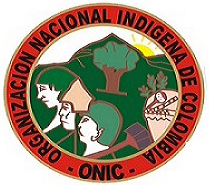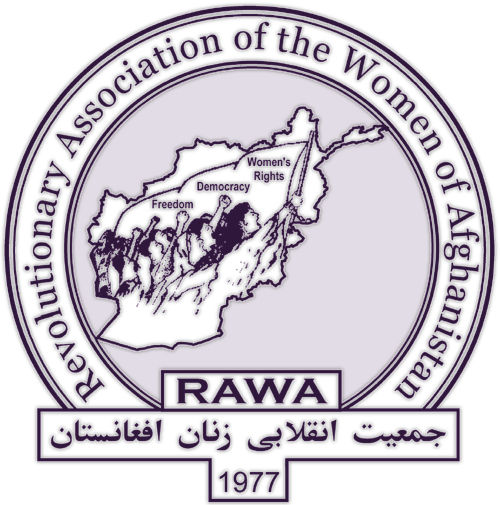Mexico Theater
Chiapas: paramilitaries freed from prison —attack bus route?
On Feb. 11, ski-masked gunmen stopped a bus on the road between San Cristobal de Las Casas and Ocosingo in the conflicted southern Mexican state of Chiapas, threatening passengers and robbing them of cameras, cell phones, ID documents and other possessions. The assault comes days after local Zapatista supporters were illegally detained by members of the OPDDIC paramilitary group, who accused them of being bandits. (La Jornada, Feb. 12) That same day, seven OPDDIC militants, including leaders Carlos Moreno Hernández and Pedro Chulín Jiménez, were freed from prison on the orders of a federal judge, who issued an amparo protecting them from arrest or prosecution. (La Jornada, Feb. 12)
Mexico: paramilitaries assassinate indigenous activist in Guerrero
Lorenzo Fernández Ortega, a 38-year-old bricklayer and member of the Organization of the Indigenous Mepha'a People (OPIM), was stabbed to death Feb. 10 in Ayutla de los Libres, a village in the conflicted Mexican state of Guerrro. The group had been protesting a campaign of forced sterilizations of indigenous women in the region, and charged that the federal army is establishing paramilitary groups which have carried out recent attacks on indigenous activists. OPIM's statement on the murder said, "our compañero Lorenzo was assassinated by paramilitaries that work for the 48th Infantry Battalion of the Mexican Army, headquartered at Cruz Grande." (OPIM statement via Zapateando; La Jornada, Feb. 12)
Mexico: Oaxaca top cop shot
A group of five men armed with AK-47 and AR-15 rifles and 9mm pistols shot and killed Alejandro Barrita Ortiz, director of the Auxiliary, Industrial, Bank and Commercial Police for the southern Mexican state of Oaxaca, on Jan. 30 as he was jogging on the track at the Bosque El Tequio sports complex near Oaxaca city. Also killed in the military-style ambush were one of Barrita Ortiz's bodyguards, Juan Eduardo Prado Perez; government employee Rafael Alonso Muñoz; and sports trainer Virginia Galan Rodriguez, who won the state sports prize in 2003. Two other people were wounded. It was not clear whether Muñoz and Galan were with Barrita Ortiz's group.
Detentions, torture and violence in Chiapas
Local schoolteacher Felipe Hernández Yuena was detained Feb. 5 in the municipal government building at Venustiano Carranza, a conflicted town in the southern Mexican state of Chiapas, accused of "sedition and riot." Showing bruises on his face, arms and abdomen, Hernández Yuena said that while in custody he was beaten and tortured by masked men he believed were from military intelligence, who questioned him about whether recent anti-NAFTA protests in the state capital, Tuxtla, were organized by the clandestine Popular Revolutionary Army (EPR). (La Jornada, Feb. 7)
Calderón to demilitarize Mexican drug war?
After meeting with UN Human Rights Commissioner Louise Arbour, Mexican President Felipe Calderón announced Feb. 6 that he would gradually remove army troops from drug enforcement duty, replacing them with newly-trained police units. Use of the military in Mexico's war on the drug cartels has been harshly criticized by rights groups, including the official National Human Rights Commission. However, the official plan still posted to the website of Mexico's Federal Registry says military forces will remain involved in drug enforcement through the end of Calderón's term in 2012. (Bloomberg, Feb. 6)
Mexico: mine union set to deal?
As of Jan. 29 Mexican officials and representatives of the National Union of Mine and Metal Workers of the Mexican Republic (SNTMMRM) said they had agreed on a "no aggression" pact and were ready to negotiate starting on Jan. 30. The union and the government have had a series of confrontations since February 2006, when the Labor and Social Security Secretariat removed SNTMMRM general secretary Napoleon Gomez Urrutia from his post for alleged corruption. Topics for negotiation were to include the removal of police and soldiers from the giant Cananea copper mine, site of a six-month strike; the disposition of bodies neverrecovered from the Pasta de Conchos coal mine after a February 2006 explosion that killed 65 workers; mine safety issues; strikes likely to break out in the mining industry; and wage and contract issues. Union representatives say they expect Gomez Urrutia to return to Mexico from the US by March at the latest. (La Jornada, Jan. 29)
Mexico protests US tear gas attacks
Mexico formally protested use of tear gas by the US Border Patrol, the Exterior Secretariat sending a letter to the US Embassy requesting a probe of an incident last month in which Cristian Saldana, 15, was struck in the nose by a gas canister after he reportedly threw stones at Border Patrol agents near Tijuana. "Launching tear gas does not contribute in any way to a climate of understanding and collaboration," an Exterior Secretariat statement said Jan. 31, calling the practice "unacceptable."
Mexico City "mega-march" against NAFTA
In a "megamarcha" against the dropping of trade barriers under the terms of NAFTA, thousands of small farmers filled the streets of Mexico City's historic district Jan. 31. A caravan of 100 tractors that traveled 2,000 kilometers from Ciudad Juarez was joined by caravans from Querétaro, Pachuca, Toluca and Cuernavaca, organized by the National Association of Campesino Enterprises (ANEC). Marchers demanded the renegotiation of NAFTA, under the slogan "Without corn there is no country, and not without beans either" (Sin maíz no hay país y sin frijol tampoco). (El Financiero, Feb. 1; Cronica de Hoy, Jan. 30)















Recent Updates
1 day 3 hours ago
2 days 6 hours ago
2 days 6 hours ago
2 days 20 hours ago
2 days 20 hours ago
2 days 23 hours ago
2 days 23 hours ago
2 days 23 hours ago
5 days 22 hours ago
1 week 1 day ago